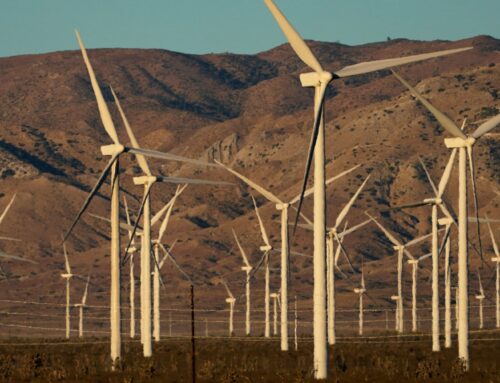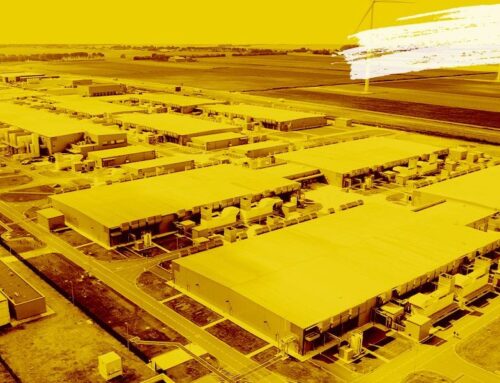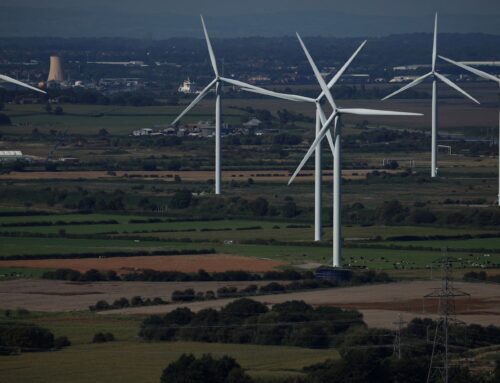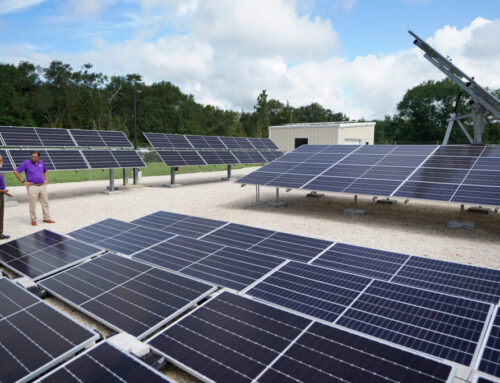Can Renewable Energy Be Both Clean and Reliable?
July 4, 2025
Global Commons
Jul 4th 20258 mins


Solar and wind power are essential to a low-carbon future, but their output is not always available when it is needed most. As energy systems become more reliant on renewables, managing their variability will be crucial to ensuring a stable and reliable grid.
—
If solar and wind power are so clean and abundant, why can’t we just use them to replace fossil fuels?
Despite dramatic cost declines and widespread deployment, renewables like wind and solar come with a fundamental challenge: they only produce power when the sun is shining or the wind is blowing. Unless we rethink how we manage electricity systems, the intermittency of these energy sources threatens to stall progress on decarbonization.
In energy terms, intermittency refers to the variable supply from certain sources – in other words, power that is not available on demand but only when conditions allow.
Unlike a gas or coal plant, which can be turned up or down to match consumption, a solar farm can only produce electricity when the sun is out, and a wind turbine only when air is moving. Solar panels generate nothing at night and much less on cloudy days or in winter. Wind turbines can go from full power to zero within hours if the weather changes. This weather-dependence is the basis of intermittency: renewable output fluctuates daily and seasonally in ways that do not always align with society’s round-the-clock power needs.
The physical characteristics of solar and wind power can explain their variability.
Solar energy follows a clear diurnal cycle: output rises in the morning, peaks around midday, and falls to zero at night. Even in the middle of the day, a passing cloud can briefly dip solar generation. Light clouds may lower production by about 24%, while thick cloud layers can reduce it by as much as 67%. Solar is also highly seasonal. Long, sunny summer days yield far more energy than the short, overcast days of winter. In the UK, for instance, total solar generation during December can amount to only about 20% of the output seen in May and July.


Similarly, wind energy is governed by shifting atmospheric patterns. Some seasons and locations are windier than others (in many regions, wind blows stronger during winter nights than summer days), which can offset solar’s patterns to a degree. This means wind and solar naturally complement each other to an extent – often wind picks up when solar ebbs, and vice versa. However, they can also fail simultaneously.
Northern Europe fears the “dunkelflaute” (German for dark doldrums), when a high-pressure system brings still air and overcast skies in winter, knocking out both wind and solar at once. Such events, though infrequent, show why we cannot currently rely on renewables alone without backups.
Periods of low renewable generation have already tested electricity systems.
One example is California, which has a solar-heavy grid. In August 2020, a record heatwave spiked air-conditioning demand and as the evening arrived the state was forced to trigger rolling blackouts. Solar farms had provided ample electricity during the day, but once the sun set, that supply faded while demand for cooling remained high. Experts pointed out that more battery storage might have prevented the outage by saving daytime solar power for use after dark. In other words, storing energy from intermittent resources like solar to make it available during peak hours. California has since accelerated investment in large-scale batteries to boost evening grid reliability.
Germany provides a winter case study of intermittency. In early November 2024, a prolonged dunkelflaute settled over Central Europe, causing several days of bleak skies and barely a breeze. During this period, Germany’s millions of solar panels and wind turbines generated very little electricity. Renewables contributed only about 30% of Germany’s power in the first week of November, while fossil-fuel plants and imported electricity from neighbours ramped up to supply the remaining 70%.
Analysts note that such “dark lull” conditions are not unusual for that time of year. A study by the German Meteorological Service found that, on average, about two instances per year see wind and solar output drop below 10% of their total capacity for around 48 hours. In these moments, grid operators must rely on backup sources and stored energy to keep the lights on. Fortunately, Germany avoided blackouts during the 2024 dunkelflaute by tapping into its reserves of gas-fired power plants and drawing electricity through European interconnections.
Integrating large shares of weather-dependent energy into an electric grid changes how the grid operates. Power grids require a constant balance between supply and demand in real time.
Traditionally, this balance was maintained with controllable generators. If demand rose, grid operators could simply dispatch more output from a coal, gas, or hydropower plant. With intermittent renewables, operators have much less direct control. Solar and wind cannot be dispatched at will, so when nature does not provide, the grid must rapidly find alternative power or reduce demand. This creates new challenges for reliability and for the way power systems have been designed for decades.
A major challenge is handling rapid swings in supply and demand. As solar output surges and dips, other plants must ramp up or decrease generation at breakneck speed to fill the gaps. California’s famous “duck curve” illustrates this well.


On a sunny day, solar meets a big chunk of midday demand, causing the net load on other generators to plummet at noon and then “duck back up” steeply in late afternoon as solar fades. This steep ramp, sometimes thousands of megawatts within an hour or two, strains the grid. Grid operators must keep fast-reacting backup plants on standby each evening, and even then it can be difficult to perfectly match the supply to the sharply rising demand. A misjudgement or a slight shortfall can lead to voltage drops or outages when the sun goes down. Wind power can be equally erratic, with sudden gusts or lulls that require other resources to respond in real time.
Another technical issue is maintaining grid stability (frequency and voltage) when relying on renewables. Conventional power stations with large spinning turbines inherently provide inertia, a stabilizing momentum that keeps the grid’s frequency steady against minor disturbances. Solar panels and many modern wind turbines are connected via electronic inverters and do not contribute inertia. As a result, a grid dominated by renewables is more sensitive to imbalances, since there is less physical resistance to sudden frequency changes.
With a high share of variable supply, system frequency can deviate quickly if a cloud passes or the wind drops, unless other resources kick in immediately. Indeed, studies show that a greater proportion of wind and solar generation reduces system inertia and requires faster response strategies to maintain stable frequency and voltage. Grid operators increasingly rely on rapid-response reserves like batteries to manage these fluctuations on a second-by-second basis. They also invest in advanced forecasting to predict dips and peaks in renewable output and prepare accordingly.
A variety of solutions, some already in use and others still emerging, can mitigate renewables’ unreliability and strengthen grid stability.
Batteries (typically lithium-ion) are being deployed at grid scale to soak up excess electricity when solar and wind production is high and release it when output drops. Large battery farms can store surplus solar power at noon and inject it back into the grid after sunset.
Battery costs have fallen dramatically, making this a good solution for short-term (hourly) balancing. Energy roadmaps for net-zero emissions count on massive expansions of battery storage to manage the hourly and daily variability of renewables while keeping grids stable.


Another solution is to flexibly manage the demand side of the equation.
Demand response programs encourage consumers – from heavy industries down to households – to shift their electricity use to times when renewable energy is abundant or to reduce usage during peak shortage times. This can be done via price incentives or automated signals, such as discounts to run appliances or charge an electric car at midday instead of in the evening. Such strategies help flatten the demand peaks and valleys, making it easier to serve with variable supply.
Another way to counter local intermittency is to connect grids over larger geographical areas so that energy can be shared.
If a region is becalmed or in darkness, it can import power from elsewhere that has a surplus. High-voltage transmission lines now link many countries and regions, enabling transfers of renewable power across hundreds or thousands of kilometres. In Europe, for example, strong cross-border links mean that a dunkelflaute in Germany can be mitigated by wind or hydropower from other countries.
The same German Meteorological Service study mentioned earlier found that when viewed across an integrated European grid, the incidence of extremely low renewable output events drops dramatically – what was two events per year in Germany alone fell to just 0.2 events when pooling the whole continent.
Researchers and engineers are also developing ways to address longer-duration intermittency that lasts days or weeks.
One approach is to store surplus renewable energy in the form of chemical fuels for later use. For instance, excess electricity on a windy week could run electrolysers that produce green hydrogen from water. That hydrogen can be stored underground or in tanks and then used to generate electricity (through fuel cells or turbines) during prolonged gaps in sun or wind. Hydrogen can thus act as a long-term energy storage medium, helping to bridge seasonal supply gaps. Other emerging technologies include flow batteries and compressed air energy storage for multi-hour storage, as well as artificial intelligence-powered forecasting to better predict renewable output swings.
Meanwhile, maintaining some dispatchable zero-carbon generation – such as sustainably-managed hydropower, geothermal, or even nuclear – can complement wind and solar to ensure reliability. Ultimately, a mix of solutions will work in concert to overcome the intermittency challenge.


We cannot simply swap out all fossil fuel plants for renewables without also changing the grid itself. The variability of wind and solar power challenges the traditional design of electricity systems, which have long relied on a constant, controllable supply.
The energy transition, therefore, requires more than just building wind farms and solar panels and demands a flexible grid that can handle ebbs and flows in real time.
Fortunately, we are not starting from scratch. Battery storage, demand-side flexibility, cross-border grid interconnections, and emerging technologies like green hydrogen are already being deployed to bridge the gap between intermittent supply and constant demand. These technologies are not silver bullets, but they form the basis for a cleaner, more resilient energy system. Achieving a fully renewable and reliable energy system will depend on how effectively these solutions are integrated into the grid in the years and decades ahead.
Our non-profit newsroom provides climate coverage free of charge and advertising. Your one-off or monthly donations play a crucial role in supporting our operations, expanding our reach, and maintaining our editorial independence.
About EO | Mission Statement | Impact & Reach | Write for us
Search
RECENT PRESS RELEASES
Related Post




